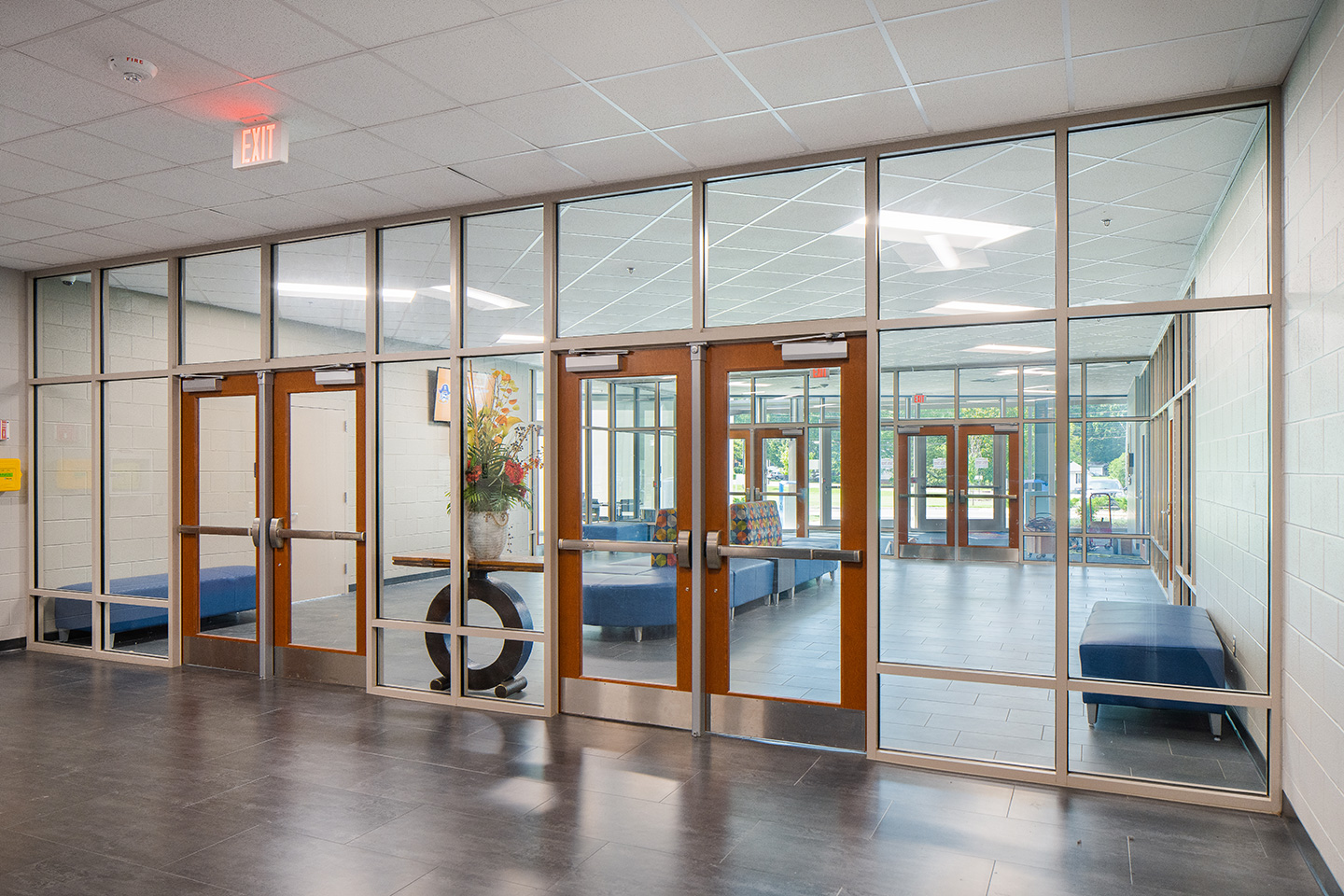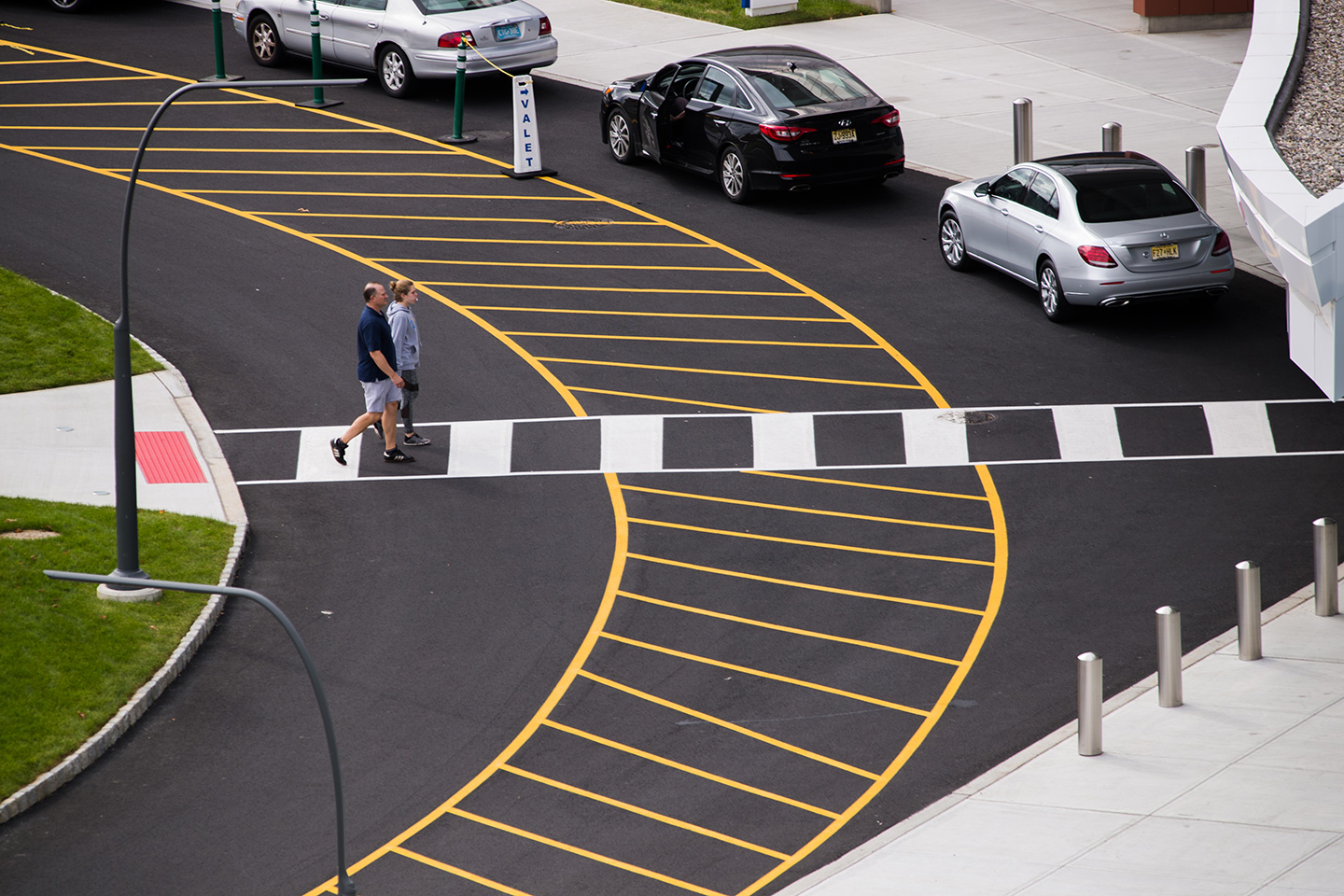A door, a highway, a webpage. What do these have in common? Many people use them every day. In fact, they're so common that we probably don't stop to think about how they were designed—that is, if they were designed well. But we definitely notice when they're poorly designed. We even blame ourselves when things go wrong, like when we pull on the "push" door or get confused at a complicated intersection.
That's because the best designs tend to be invisible and make interacting with them easy—even enjoyable. By contrast, poor designs impede and frustrate users.
Donald Norman's book The Design of Everyday Things (1988), helps us think about what makes for good design. He argues that successful designers think about how people will interact with their designs first and consider aesthetics second."
Colleen Scott
 A horizontal push bar on a door indicates that the door should be pushed rather than pulled to open.
A horizontal push bar on a door indicates that the door should be pushed rather than pulled to open.
Design and Behavioral Psychology
Norman's approach to design is to incorporate behavioral psychology. He recognizes that people gravitate towards simplicity, look for patterns, and are prone to error. Good designs acknowledge these tendencies and communicate their purpose with users, an idea known as "user-centered design." User-centered design is based on the following principles:
- Visibility. Simplify by only showing necessary elements.
- Feedback. Inform the user of the action and its outcome.
- Constraints. Restrict what kinds of user interactions are possible.
- Mapping. Establish a relationship between a control and its effect.
- Consistency. Standardize operations to be predictable.
- Affordance. Offer elements that make interactions intuitive.
I read The Design of Everyday Things several months ago and recognized how it dovetails neatly with our company’s own project areas. Norman primarily focuses on engineering-related case studies, but I think the applications are endless: graphic design, information technology, marketing—even management. Focusing on intuitive project design from the outset can benefit not only our clients, but also colleagues.
 Alternating black and white marks along a narrow strip connecting two paths indicates a walkway for pedestrians.
Alternating black and white marks along a narrow strip connecting two paths indicates a walkway for pedestrians.
Noticing Design in Everyday Things
Once you start thinking about these principles of good design, you start noticing them everywhere. A flat plate on a door tells you it is meant to be pushed (affordance). Guardrails along a highway limit your driving to designated lanes (constraints). A loading bar on a webpage lets you know it is processing your request (feedback). Conversely, you start realizing why certain designs can be frustrating to interact with, like when buttons on a video game controller perform different actions across different games (inconsistency).
I'll close with one of my favorite anecdotes from the book. Norman originally published it under the title The Psychology of Everyday Things, because of the emphasis on behavioral psychology, but also because he wanted the first letters to spell out POET. There was just one problem: bookstores saw the title and logically assumed it should go in the psychology section instead of engineering. Norman had fallen victim to his own design principles. The book's next edition was promptly released with the title it still has today.